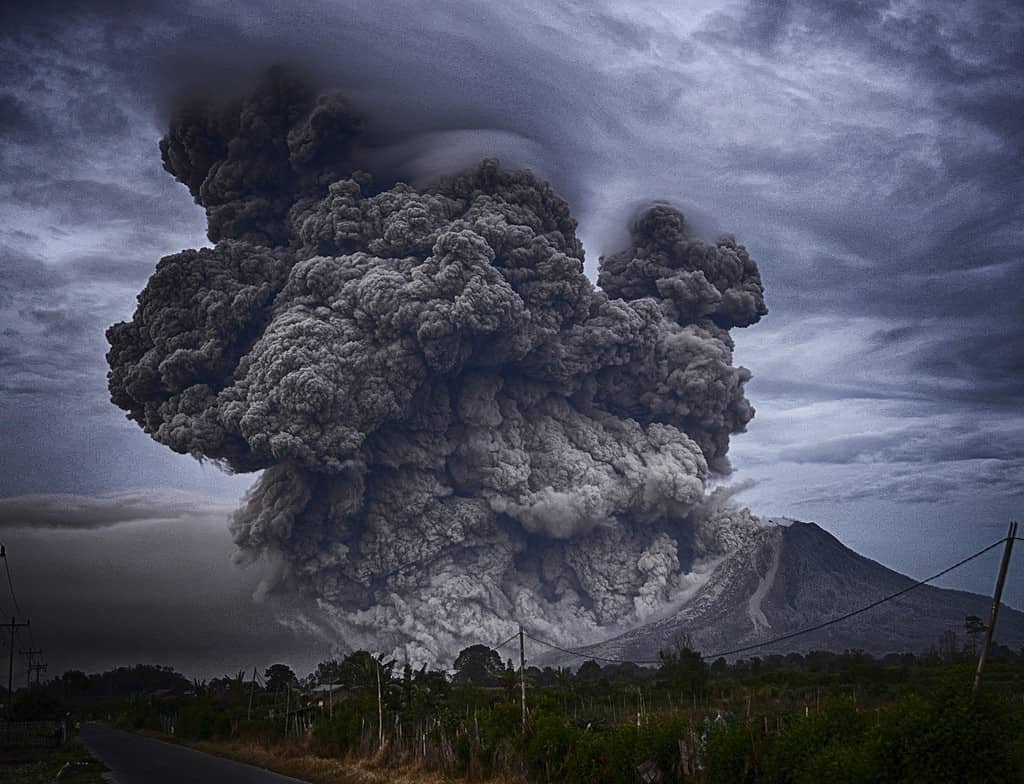
An international team of researchers led by the University of Geneva (UNIGE) has shed new light on one of Earth’s most volcanically active periods. The team examined readings from 12th- and 13th-century European and Middle Eastern chronicles and ice core and tree ring data to accurately date some of the most significant volcanic eruptions ever recorded. Their findings published in the journal Nature reveal that medieval monks unwittingly recorded some of history’s most significant volcanic eruptions by observing the night sky.
The researchers pored over hundreds of annals and chronicles from across Europe and the Middle East for almost five years, searching for references to total lunar eclipses and their coloration.
Total lunar eclipses occur when the Moon passes into the Earth’s shadow. Still, after a very large volcanic eruption, there can be so much dust in the stratosphere that the eclipsed Moon almost disappears.
The monks of the time were especially careful to take note of the Moon’s coloration, as they were mindful of the Book of Revelation, which speaks of a blood-red moon as a vision of the end times.
Of the 64 total lunar eclipses that occurred in Europe between 1100 and 1300, the chroniclers documented 51. The Moon was also unusually dark in five cases. But the lead author of the study, Sébastien Guillet, senior research associate at the Institute for environmental sciences at UNIGE, connected the monks’ records of the brightness and color of the eclipsed Moon with volcanic gloom when he realized that the darkest lunar eclipses all occurred within a year or so of major volcanic eruptions.
Scribes in Japan also took equal note of lunar eclipses. One of the best-known, Fujiwara no Teika, wrote of an unprecedented dark eclipse observed on December 2, 1229. The stratospheric dust from large volcanic eruptions was responsible not only for the vanishing Moon, but also for cooling summer temperatures by limiting the sunlight reaching the Earth’s surface. This in turn could bring ruin to agricultural crops.
“We know from previous work that strong tropical eruptions can induce global cooling on the order of roughly 1 degree Celsius (34 degrees Fahrenheit) over a few years,” said Markus Stoffel, professor at the Institute for environmental sciences at UNIGE and another study author. “They can also lead to rainfall anomalies with droughts in one place and floods in another.”
Despite these effects, people at the time could not have imagined that the poor harvests or the unusual lunar eclipses had anything to do with volcanoes, as the eruptions themselves were largely undocumented.
“We only knew about these eruptions because they left traces in the ice of Antarctica and Greenland,” said co-author Clive Oppenheimer, professor at the Department of Geography at the University of Cambridge. “By putting together the information from ice cores and the descriptions from medieval texts we can now make better estimates of when and where some of the biggest eruptions of this period occurred.”
The interval from 1100 to 1300 is known from ice core evidence as one of history’s most volcanically active periods. Of the 15 eruptions considered in the new study, one in the mid-13th century rivals the famous 1815 Mount Tambora eruption that brought on ‘the year without a summer’ of 1816.
The collective effect of the medieval eruptions on Earth’s climate may have led to the Little Ice Age, when winter ice fairs were held on the frozen rivers of Europe. The findings are crucial to understanding how past volcanism affected not only the climate but also society during the Middle Ages, concludes the researcher.
“Knowing the season when the volcanoes erupted is essential, as it influences the spread of the volcanic dust and the cooling and other climate anomalies associated with these eruptions,” Guillet said.









